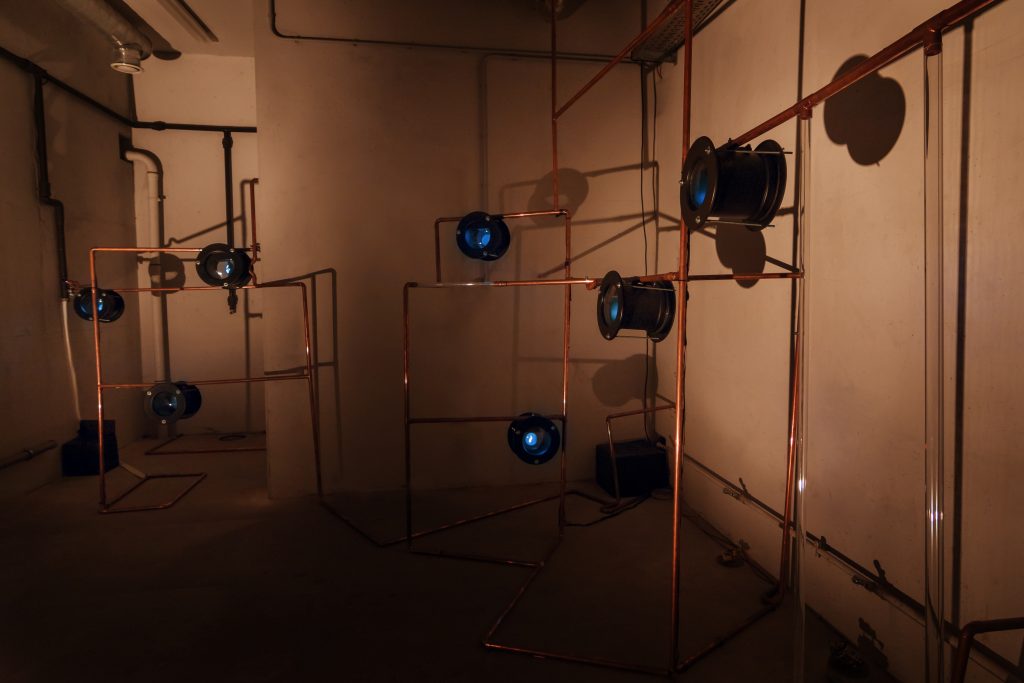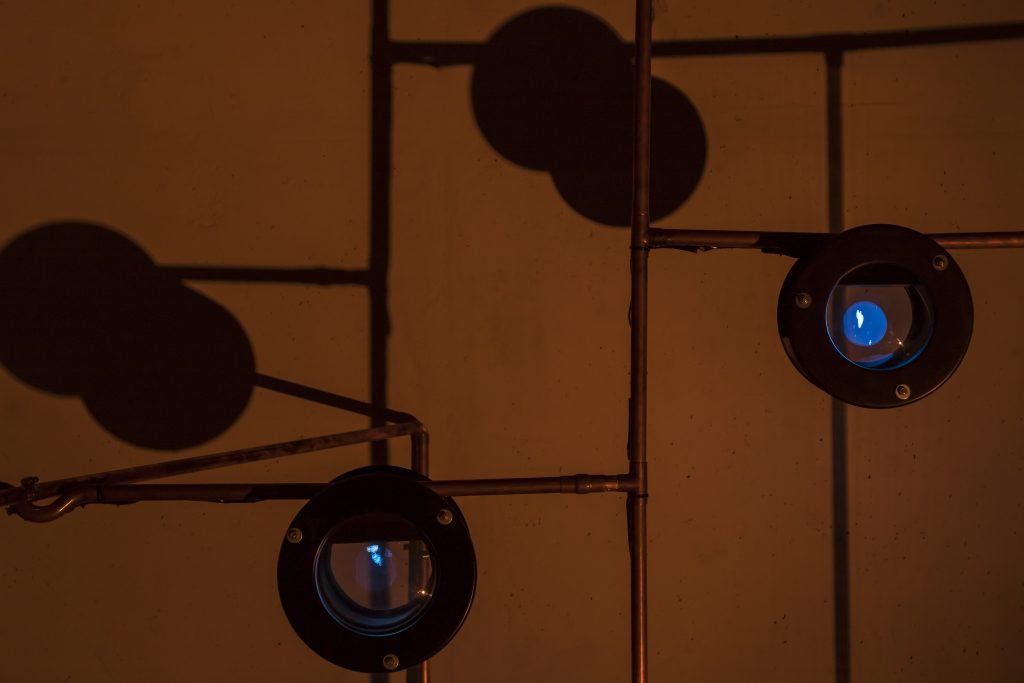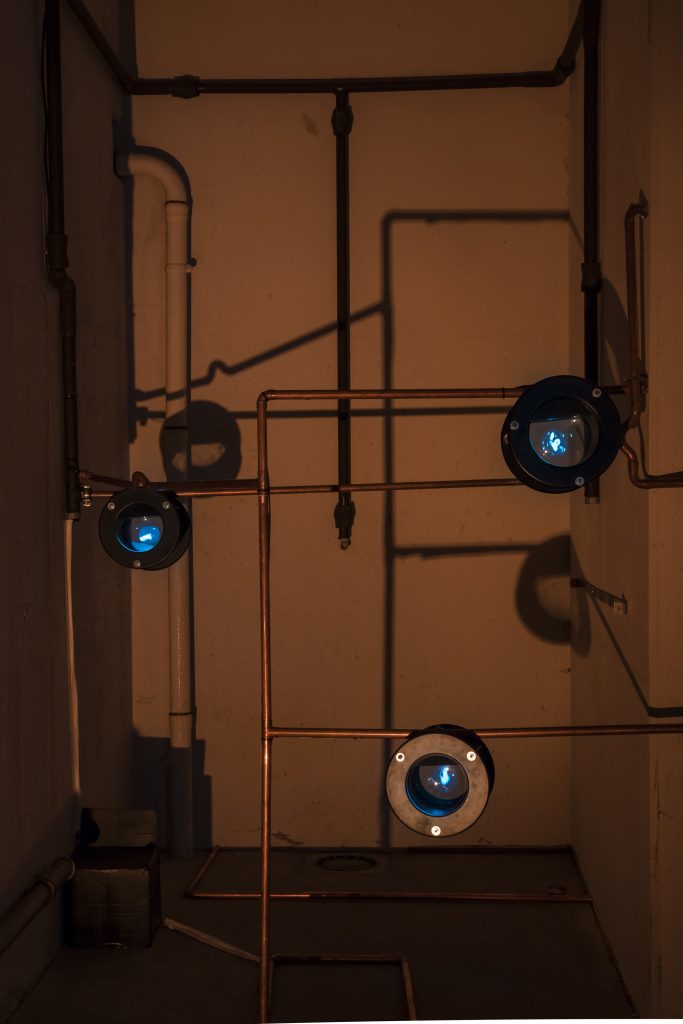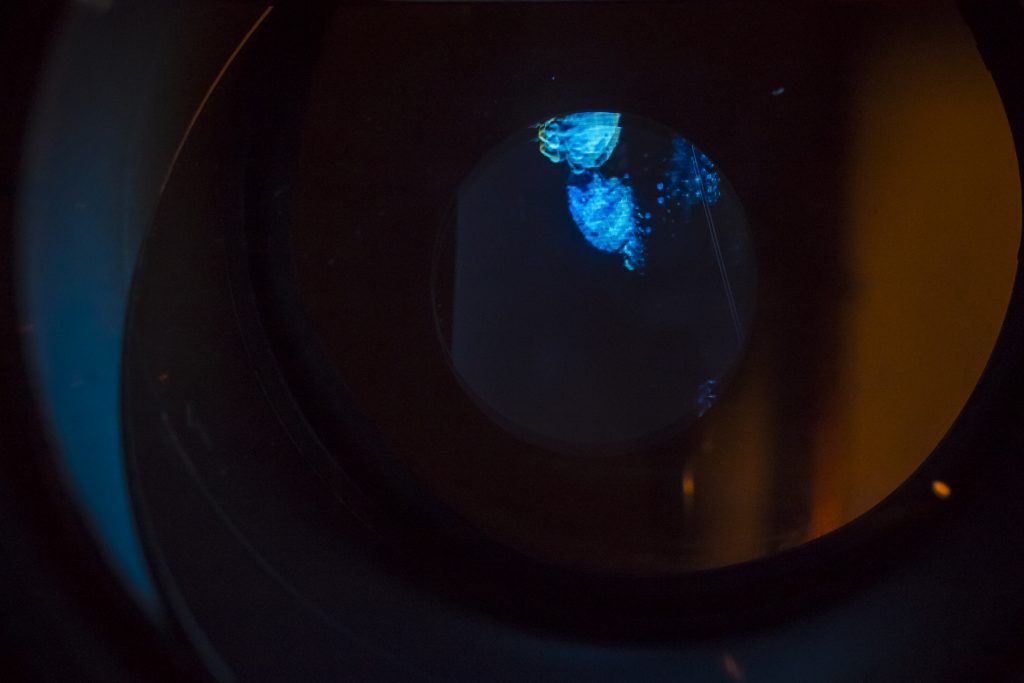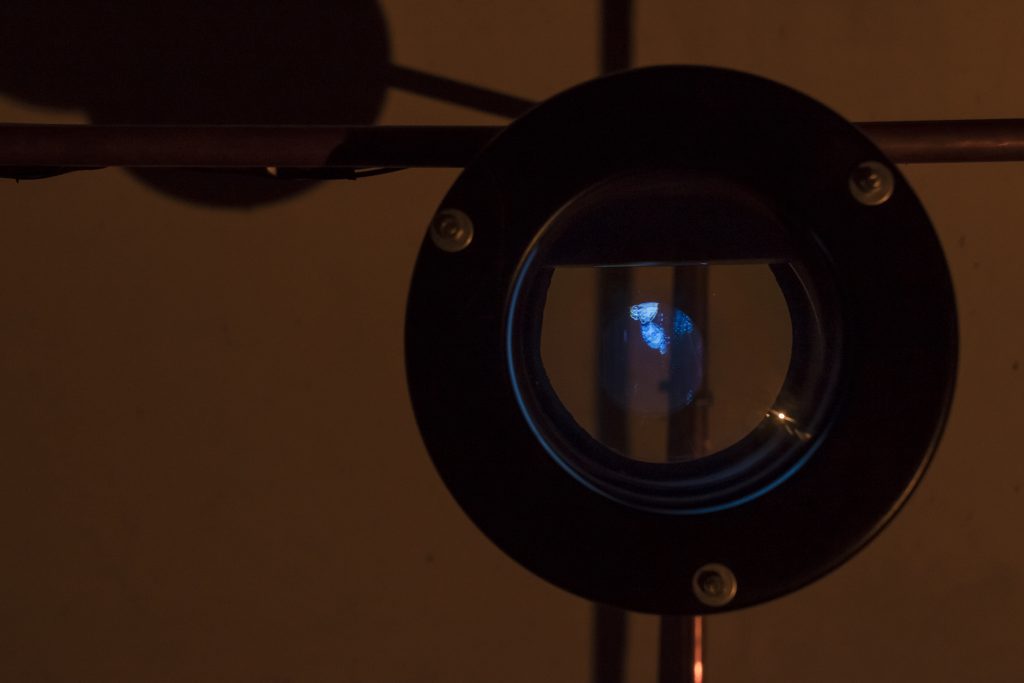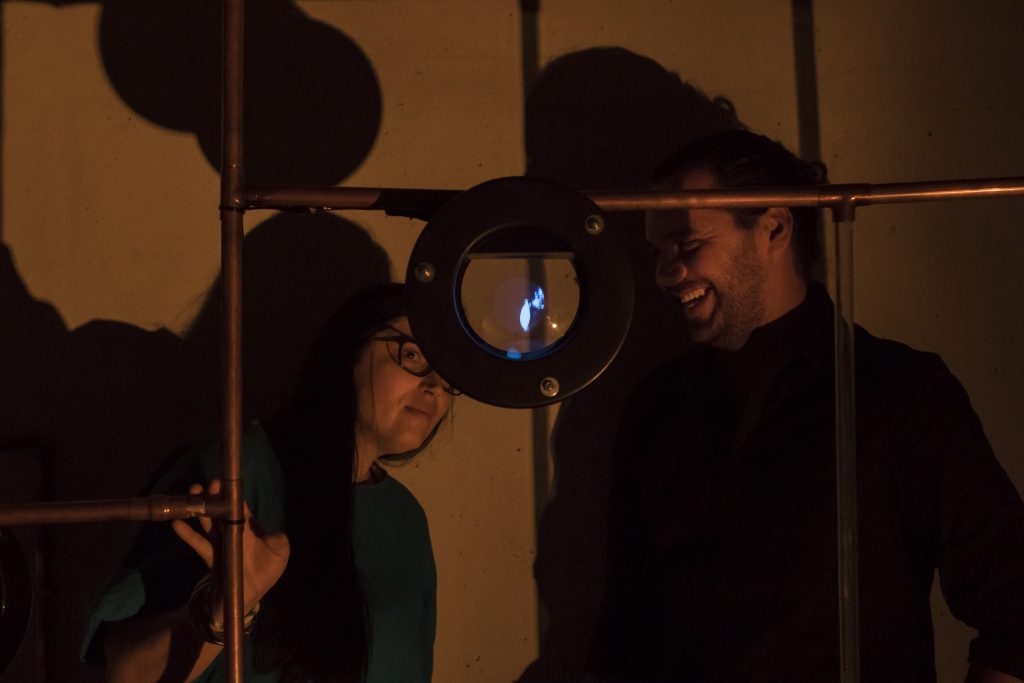——⇩Slovensko besedilo⇩ ——
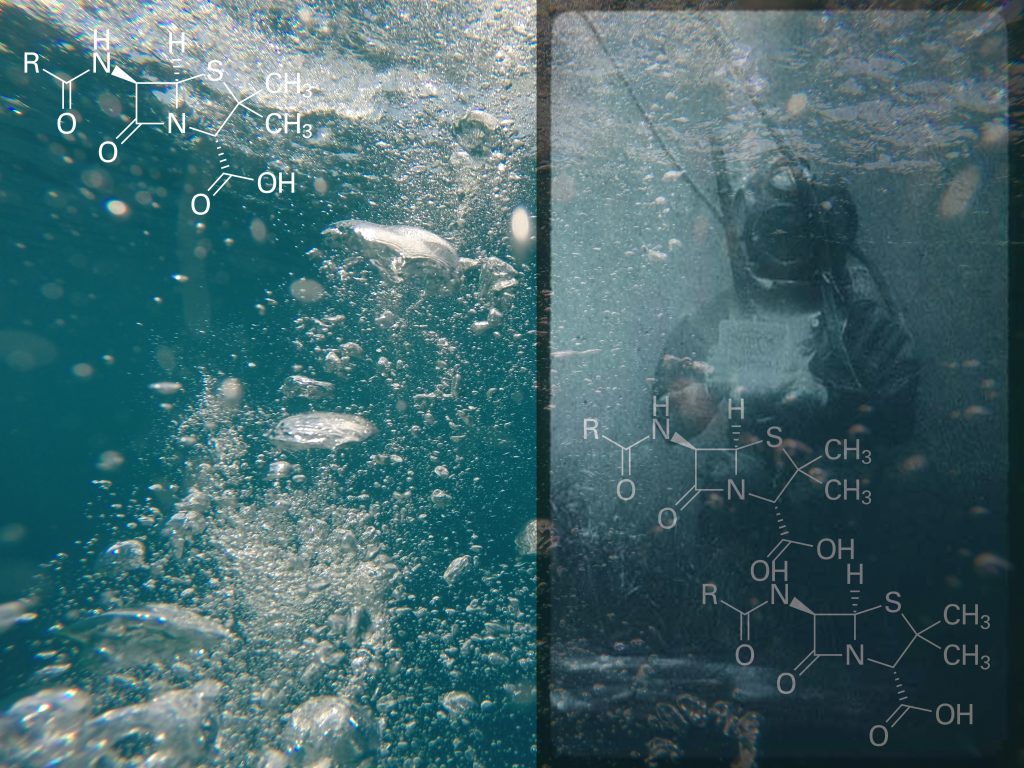
aqua_forensic
underwater Interception of *Biotweaking in **Aquatocene
by Robertina Šebjanič and Gjino Šutić
aqua_forensic illuminates the invisible anthropogenic (pharmaceutical) chemical pollutants – residues of human consumption – “monsters” in the waters.
The project combines art/science/citizen science in a “hunt for a phantom” and opens the discussion about our solidarity and empathy with waters beyond human perception. It’s a voyage into the relationship between the microbial seas and humans who are aquaforming the water habitats all around the planet.
The question is: How do the oceans feel our impact?
___________
footnote:
*Biotweaking – “acts or (art) of improving biological organisms on any level, by available means, to exhibit and use their full potential,” concept coined by Gjino Šutić to fully define his work. Biotweaking mostly relies on DIY biotechnology – biohacking for achieving desired goals.
**Aquatocene – is a series of research-based artworks initiated by Robertina Šebjanič that deals with cultural, (bio)political and ecological realities of aquatic environments and their consequences / challenges.
 aqua_forensic / Robertina Šebjanič, Gjino Šutić (SI , HR), Credit: Robertina Šebjanič, Gjino Šutić
aqua_forensic / Robertina Šebjanič, Gjino Šutić (SI , HR), Credit: Robertina Šebjanič, Gjino Šutić
Credits:
Project supported by:
Ars Electronica within the EMAP/EMARE project,
Projekt Atol Institute (SI), UR Institute (HR), Čistoća Dubrovnik, The Ministry of Culture of the R. of Slovenia, and The Ministry of Culture of the R. of Croatia, Sektor Institute (SI)
Co-funded by the Creative Europe Programme of the European Union.
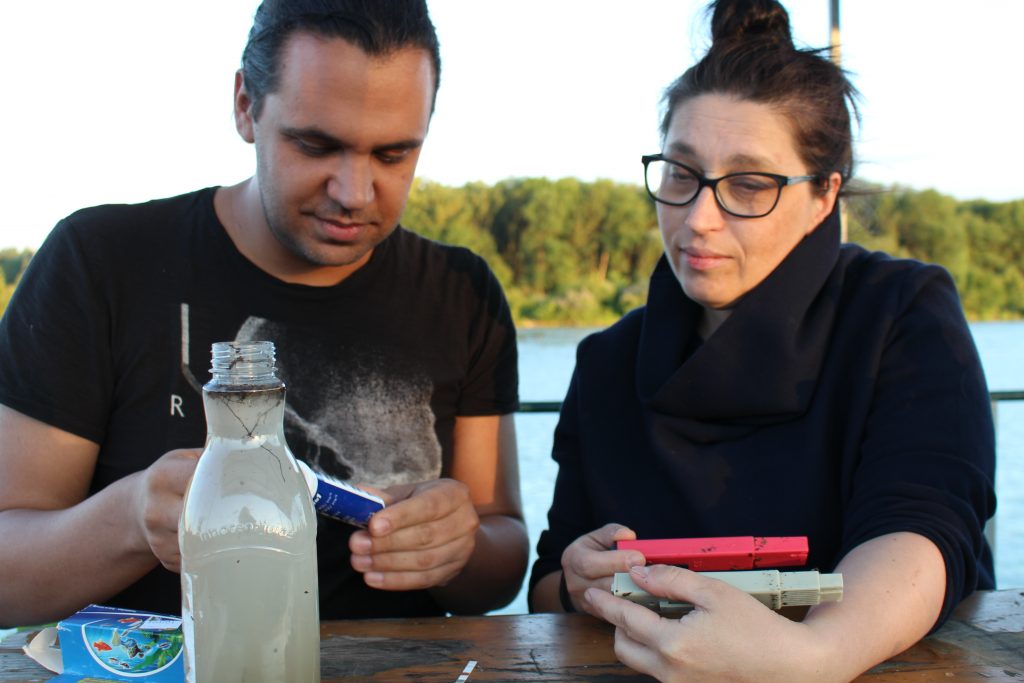 aqua_forensic / filed trip during the residency in Linz / Robertina Šebjanič, Gjino Šutić (SI , HR), Credit: Micha Gerersdorfer
aqua_forensic / filed trip during the residency in Linz / Robertina Šebjanič, Gjino Šutić (SI , HR), Credit: Micha Gerersdorfer
aqua_forensic illuminates the invisible anthropogenic (pharmaceutical) chemical pollutants – residues of human consumption – “monsters” in the waters. The project combines art/science/citizen science in a “hunt for a phantom” and opens the discussion about our solidarity and empathy with waters beyond human perception. Project is presented as an installation, workshop and public discussion with intention to create new narratives in this art/science dialog.
The installation in connecting copper pipes and holographic videos, that are showing the moment of the in vitro experiments of microorganisms dying in the 20.000 times weaker solution of pharmaceuticals, than the one average human dose. Its showing what kind of impact we do have towards the water habitats and it’s life (from micro to macro levels). The pipe system is connecting it all into the immersive environment, where the viewer is intertwined with it and invited to have a look at the modules where the holograms are presented and also to study the artist book.
The book is representing the research of these invisible chemical pollutants (mood controllers, antibiotics, antimycotics, painkillers, hormone pills etc.), that was conducted at a residency in the summer of 2018 in two specific localities: Danube river (Linz, AT) and Adriatic Sea (Dubrovnik, HR).
The vast complexity of the ecosystem that covers more than 70% of the planet, producing over 80% of the atmospheric oxygen, is still mysterious. With pollution we change the oceans inside out – influencing life and behavior of the whole loop of the interconnected ecosystem. Anthropogenic presence is now present in every part of the water habitats. It is the result of our global socio-technological system and its (geo)political, economic interest in worlds water’s – from the shallow waters on the coastal lines to the deepest points in the oceans.
*aqua_forensic* it’s a voyage into the relationship between the microbial seas and humans who are *aquaforming* the water habitats all around the planet.
The question is: How do the oceans feel our impact?
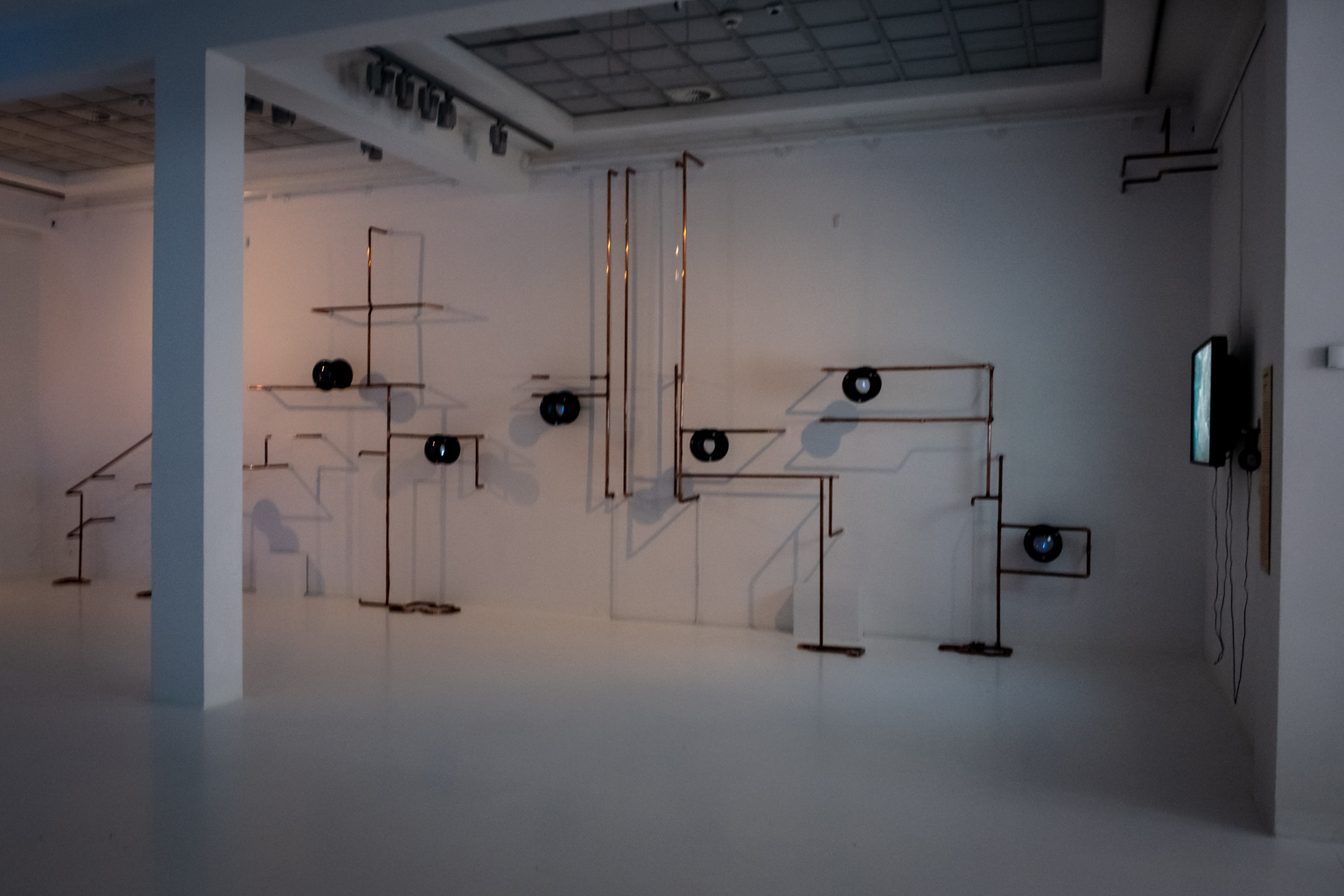 aqua_forensic at WRO biennial 2019, photo by M.E.Koch
aqua_forensic at WRO biennial 2019, photo by M.E.Koch
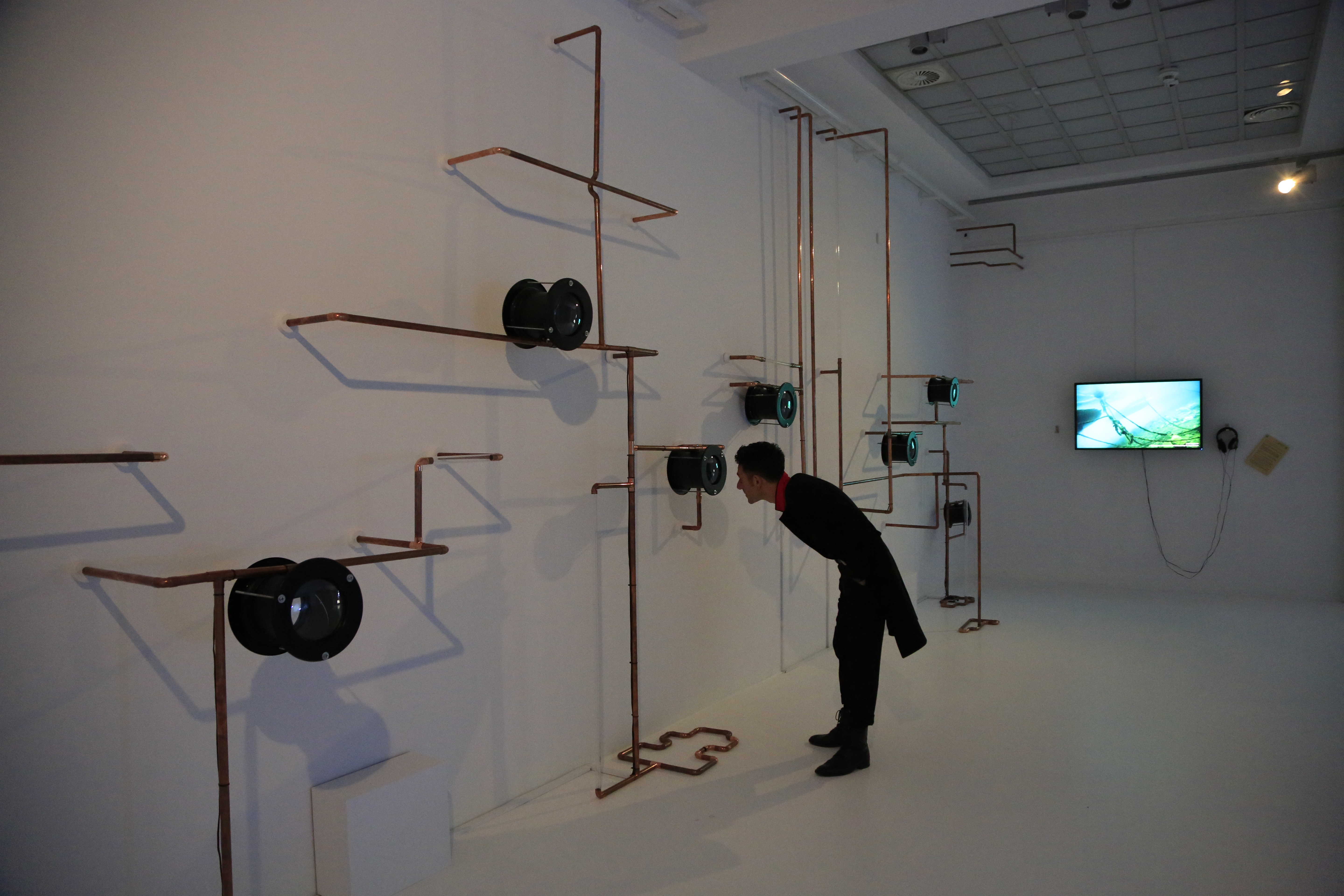 aqua_forensic at WRO biennial 2019, photo by M.E.Koch
aqua_forensic at WRO biennial 2019, photo by M.E.Koch
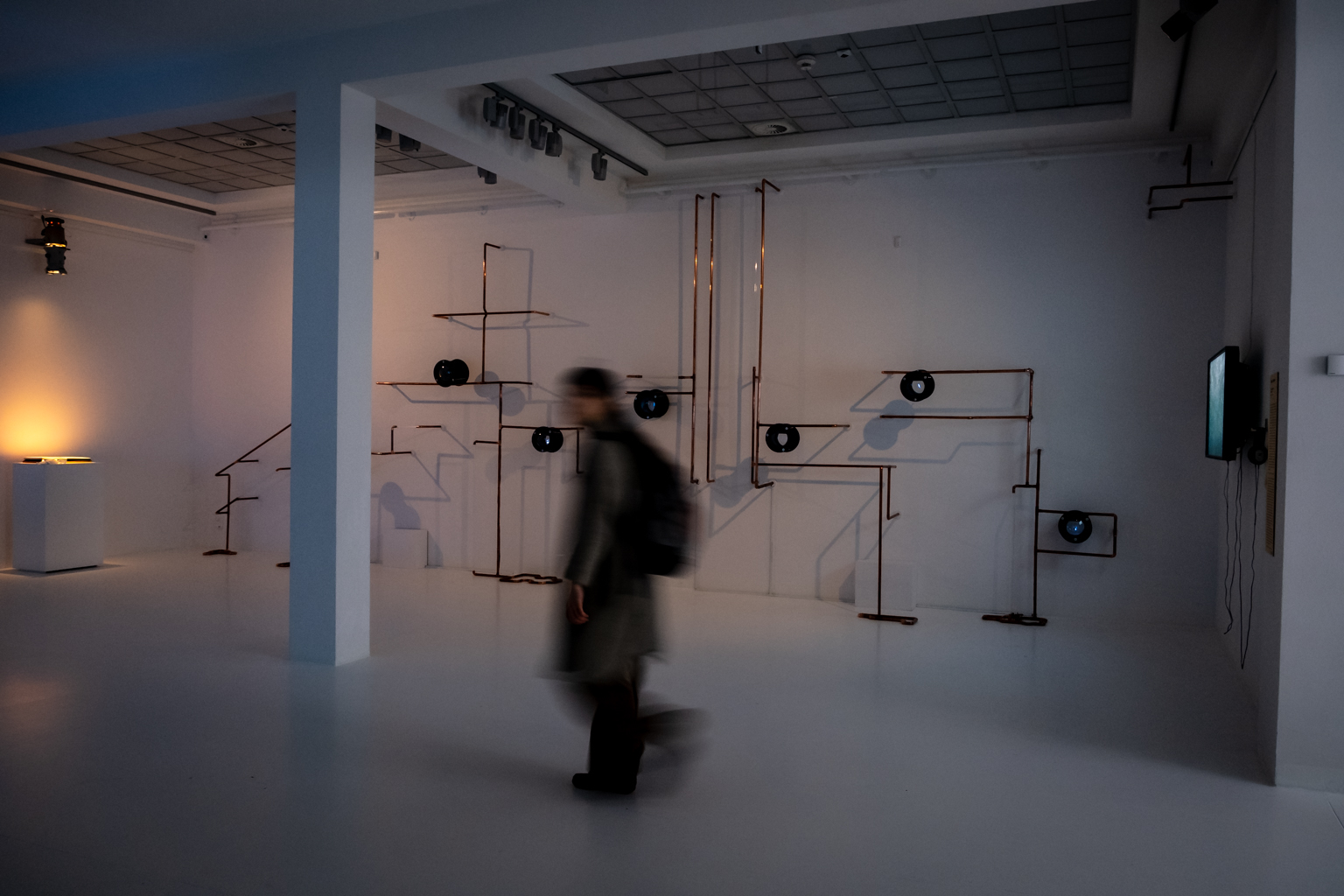
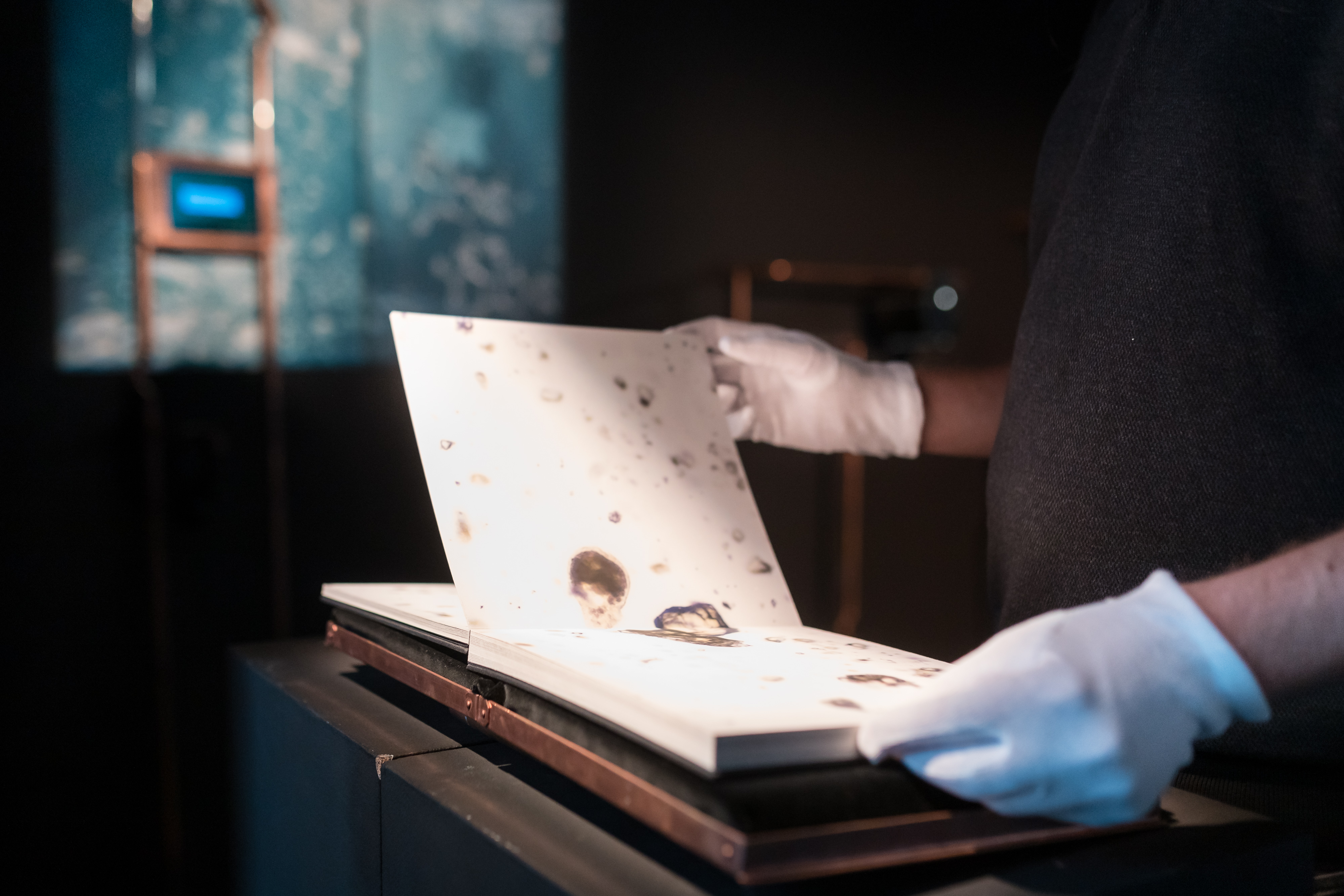
aqua_forensic / photo by Miha Godec
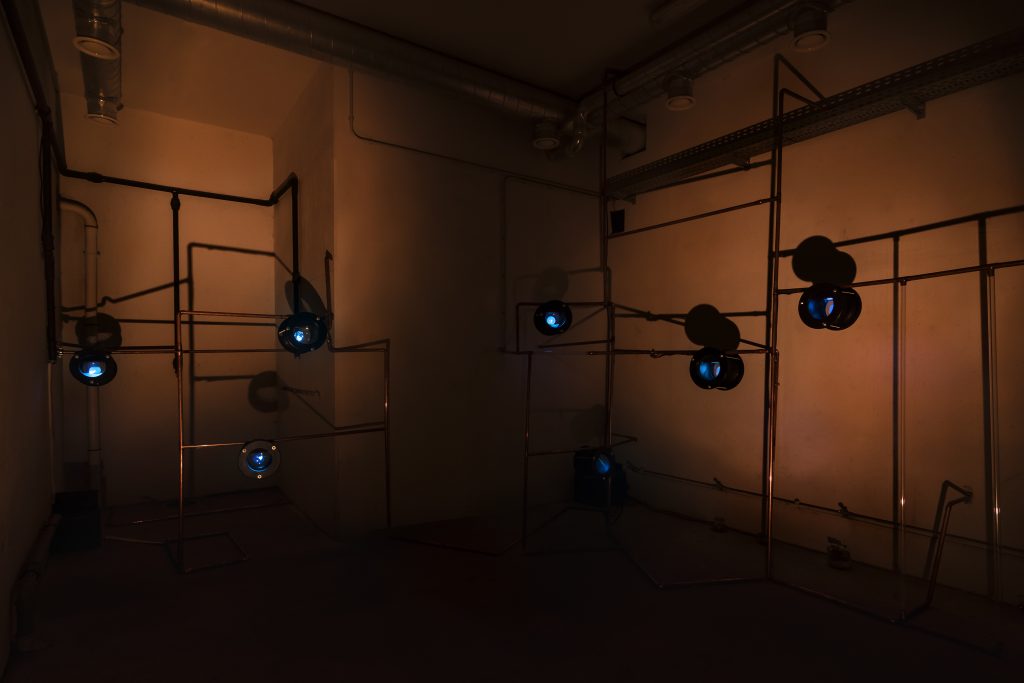
aqua forensic / photo from the exhibition at Ars electronica 2018 / photo by Miha Godec
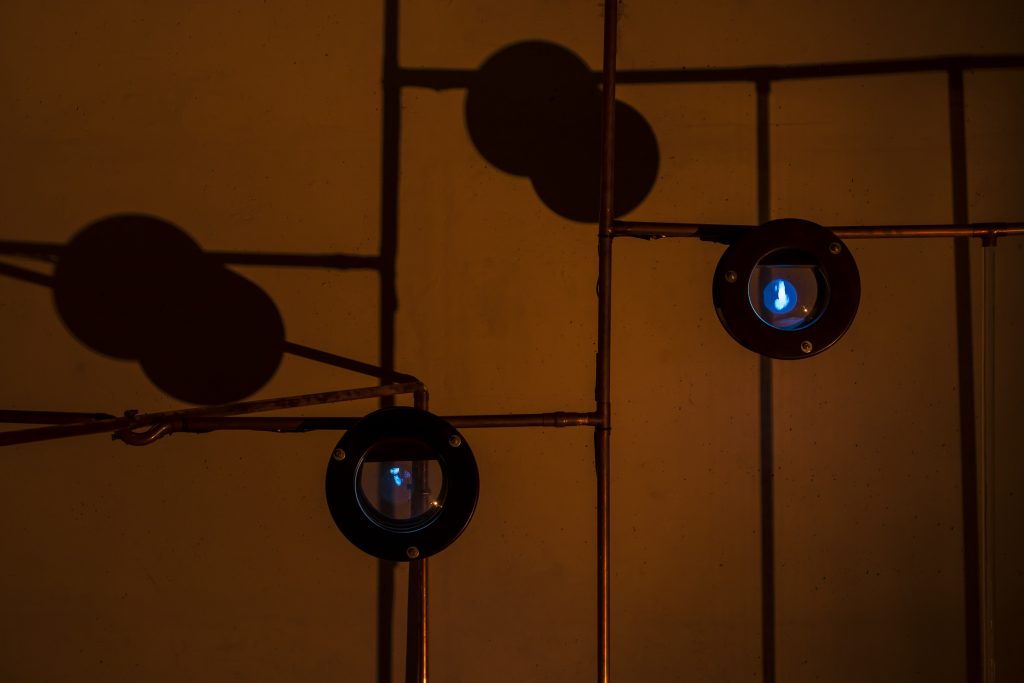 aqua forensic / photo from the exhibition at Ars electronica 2018 / photo by Miha Godec
aqua forensic / photo from the exhibition at Ars electronica 2018 / photo by Miha Godec
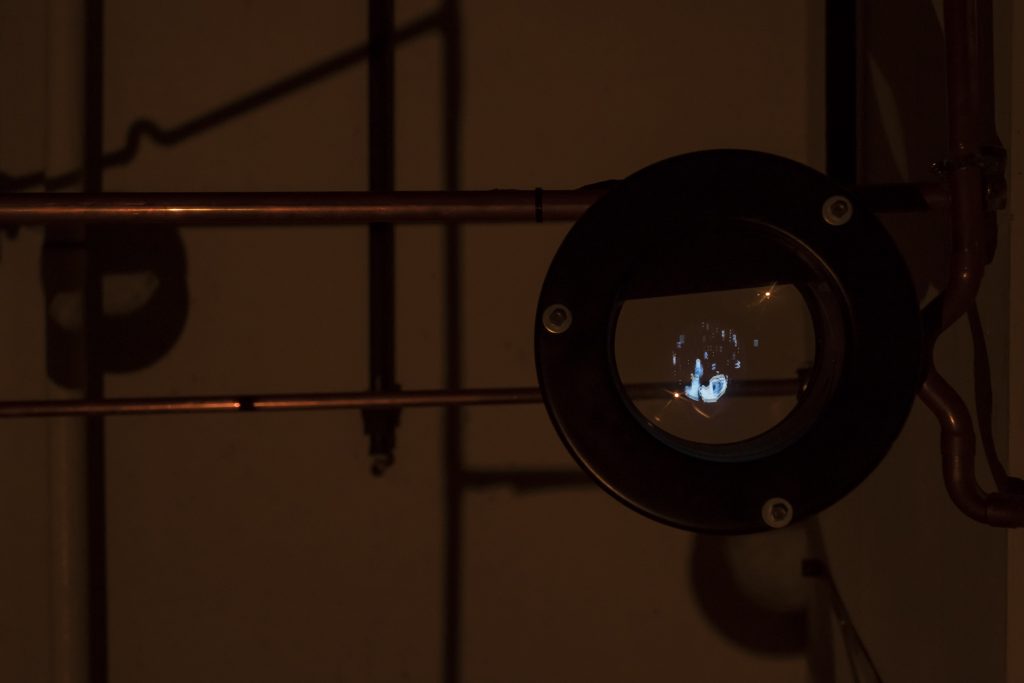 aqua forensic / photo from the exhibition at Ars electronica 2018 / photo by Miha Godec
aqua forensic / photo from the exhibition at Ars electronica 2018 / photo by Miha Godec
 aqua forensic / photo from the exhibition at Ars electronica 2018 / photo by Miha Godec
aqua forensic / photo from the exhibition at Ars electronica 2018 / photo by Miha Godec
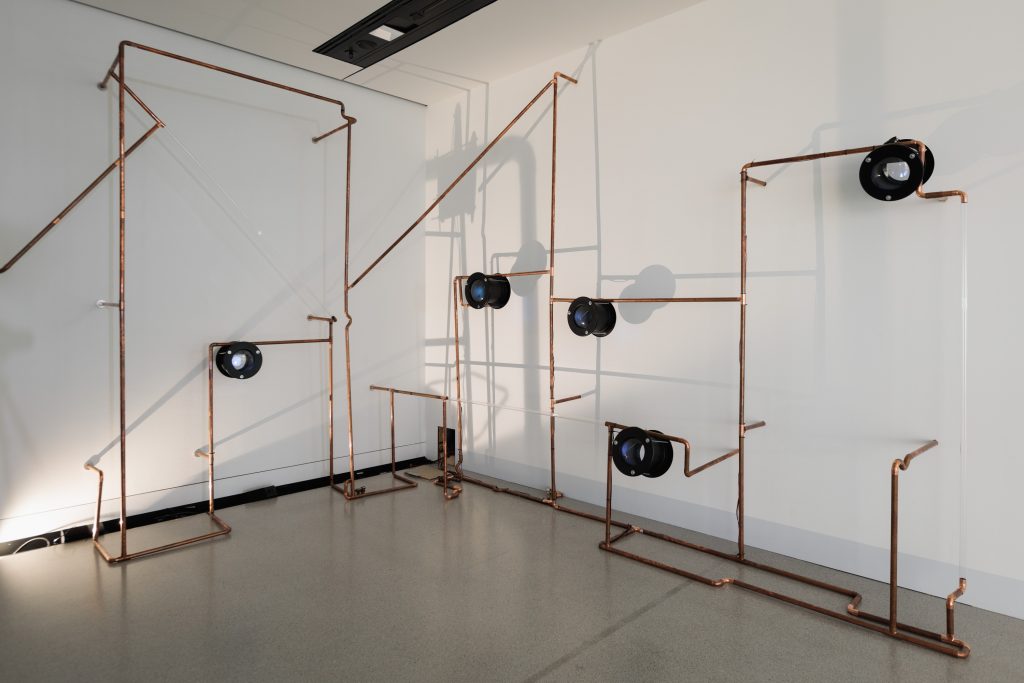 photo by: vog.photo (Ars Electronica) aqua_forensic / Robertina Šebjanič (SI), Gjino Šutić (HR)
photo by: vog.photo (Ars Electronica) aqua_forensic / Robertina Šebjanič (SI), Gjino Šutić (HR)
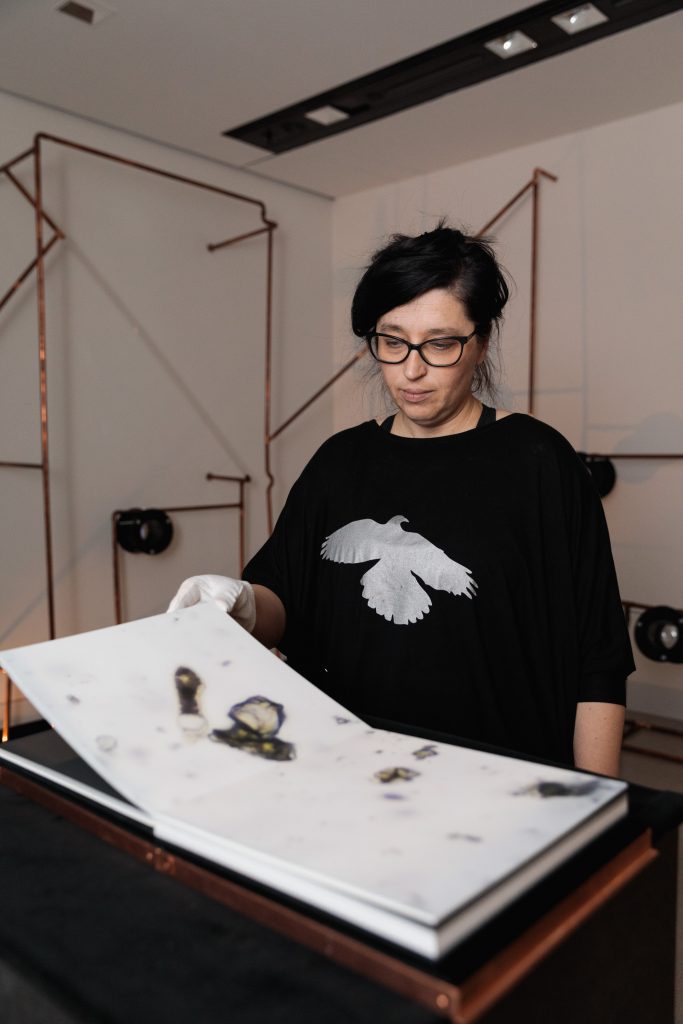
photo by: vog.photo (Ars Electronica) aqua_forensic / Robertina Šebjanič (SI), Gjino Šutić (HR)
aqua_forensic illuminates the invisible anthropogenic pollutants in water habitats. The project has a strong backbone in the hands-on research that combines: art, science, and a citizen-science approach to collect and process information on pollutants – “invisible monsters.” These invisible chemical pollutants (such as legal & illegal drugs – mood controllers, antibiotics, antimycotics, painkillers, hormone pills etc.) are the residue of human consumptions discharged into underwater habitats that were explored during a residency in the summer of 2018 in two specific localities: Danube river (Linz, AT) and Adriatic Sea (Dubrovnik, HR).
The project goal is to make these invisible anthropogenic pollutants and the pattern of their effect in the water habitats visible. With samplings of water and the seabed we are “hunting for a phantom” in the context of new mythologies. It’s a voyage into the microbial seas that are forming the body of waters all around the world. Humans do relate to water in different ways in different cultures. With pollution we change the oceans inside out – influencing life and behavior of the whole cybernetic loop of the interconnected ecosystem.
The installation in connecting copper pipes and holographic videos, that are showing the moment of the in vitro experiments of microorganisms dying in the 20.000 times weaker solution of pharmaceuticals, than the one average human dose. Its showing what kind of impact we do have towards the water habitats and it’s life (from micro to macro levels). The pipe system is connecting it all into the immersive environment, where the viewer is intertwined with it and invited to have a look at the modules where the holograms are presented and also to study the artist book.
The book is representing the research of these invisible chemical pollutants (mood controllers, antibiotics, antimycotics, painkillers, hormone pills etc.), that was conducted at a residency in the summer of 2018 in two specific localities: Danube river (Linz, AT) and Adriatic Sea (Dubrovnik, HR).
The vast complexity of the ecosystem that covers more than 70% of the planet, producing over 80% of the atmospheric oxygen, is still mysterious. We are opening discussions about aquaforming and pushing the question of “ the human footprint on water” to make it as present as the terraforming in the deep age of the Anthropocene.
Anthropogenic presence is now aquaforming every part of the water habitats. It is the result of our global socio-technological system and its (geo)political, social, economic interest in water – from the shallow waters on the coastal lines to the deepest points in the oceans.
aqua_forensic wishes to open the discussion about our solidarity and empathy in understanding the oceans, seas, and rivers beyond human perception. We are using the frame of art_sci installation, workshops and public discussions, to create new narratives in this art/science dialog.
By conducting citizen science investigation on forensic oceanography, we are looking into hidden secrets. The combination of science, art and field research is opening new doors in developing sustainable solutions – bringing these problems and thus development closer to citizens. There are a lot of challenges but also potentials when working with this topic and prototyping tools for water exploration.
The major omnipresent invisible anthropogenic pollutants are the semi-consumed pharmaceuticals that stay overlooked and are changing not just us, but also the life in fresh and saltwater habitats all around the globe. The human body on average is able to digest only 20% of the drugs that we consume, while the other 80% is disposed from our body to waste systems – ending up in world’s waters.
This has a malignant impact on the whole interconnected ecosystem in an escalating loop pattern. The loop is similar to the food consumption chain, which is entering a never ending circle of multiple effects on such things as the development patterns of all living organisms, from the micro level (viruses, bacteria and other microorganisms) to the largest organisms in the oceans.
There is a question we would like to ask: How do the oceans feel our impact?
Could we develop better communication with the oceans to find solutions, such as designing new and better therapeutics without negative collateral side effects.

aqua_forenzik
Robertina Šebjanič & Gjino Šutić
Projekt podrobneje obravnava našim očem nevidno a vseprisotnejšo onesnaževanje svetovnih voda z nevidni kemični onesnaževalci (kot so težke kovine, olja, antibiotiki, ostanki fitofarmacevtskih sredstev), in odpira razpravo o naši solidarnosti in empatiji z (pod)vodnimi habitati in njih prebivalci onkraj človeške zaznave.
Projekt aqua_forensic odpira vprašanja o t.i. aquaformingu v času antropocena in diskusijah o t.i. terraformingu, človeškemu odtisu na vodah. Predvsem pa postavlja ključno vprašanje: kako oceani čutijo naše delovanje?
aqua_forensic razkriva nevidna antropogena kemična onesnaževala, ki so ostanki industrijske proizvodnje in človeške potrošnje – “vodne “pošasti”. V “iskanju fantoma” projekt spaja principe umetnosti in znanosti (t.i. citizen science), in razpira razmislek o solidarnosti in empatiji z vodami izven človeške percepcije.
Farmacevtska industrija kakor tudi običajna gospodinjstva v veliki meri onesnažujejo vode z ostanki vsakdanje človeške potrošnje, ki ustvarja tako imenovane „vodne pošasti”. To v praksi pomeni, da se zdravila in različne droge, ki jih ljudje odplaknemo v svoje lijake, prenesejo v reke in morja, kjer močno vplivajo na različne mikroorganizme (tako živalske kot rastlinske) in s tem brutalno spreminja svoj naravni habitat.V procesu raziskave proučujeta naš vpliv na okolje in posledično tudi spreminjanje vodni habitatov; ti predstavljajo resnično kompleksen ekosistem, pokrivajo več kot 70% površine našega planeta in proizvedejo več kot 80% atmosferskega kisika, kljub temu pa je njihovo delovanje še vedno skrivnostno in slabo raziskano. Naj gre za divje oceane, prostrana jezera ali za mirne rečne habitate, kemično onesnaževanje povsod spreminja ravnovesje vodnega ekosistema.
Produkcija projekta: Ars Electronica (v sklopu projekta EMAP/EMARE), Zavod Projekt Atol, UR Institute (HR), Zavod Sektor, Ministrstvo za kultruro R. Slovenija in Ministrstvo za kulturo R. Hrvaške ter program Evropske Unije Ustvarjalna Evropa,
Posebna zahvala: Miha Godec, Martina Brković, Antonia Merčep, Lovro Martinović, Veronika Liebl, Jessica Galirow, Uroš Veber, Annick Bureaud, naravni rezervat Lokrum, ekipa Eleonore, Ur Institute, Zavod Sektor, Slavko Glamočanin

DCIM100GOPRO 
photo by: vog.photo (Ars Electronica) aqua_forensic / Robertina Šebjanič (SI), Gjino Šutić (HR) 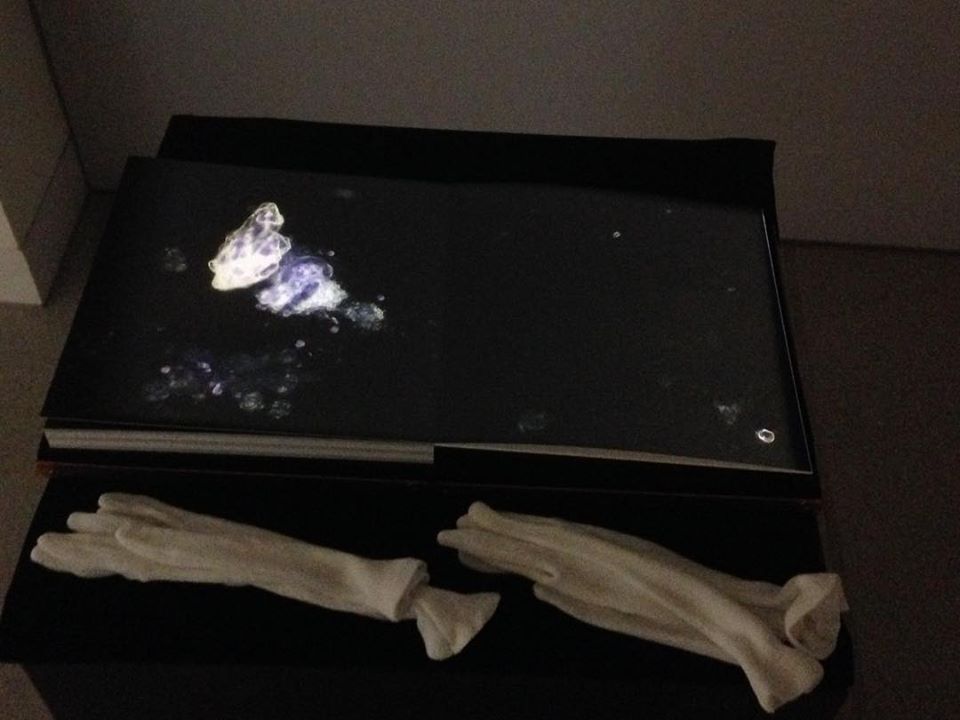
photo by artist (Ars Electronica) aqua_forensic / Robertina Šebjanič (SI), Gjino Šutić (HR) 
photo by: vog.photo (Ars Electronica) aqua_forensic / Robertina Šebjanič (SI), Gjino Šutić (HR) 